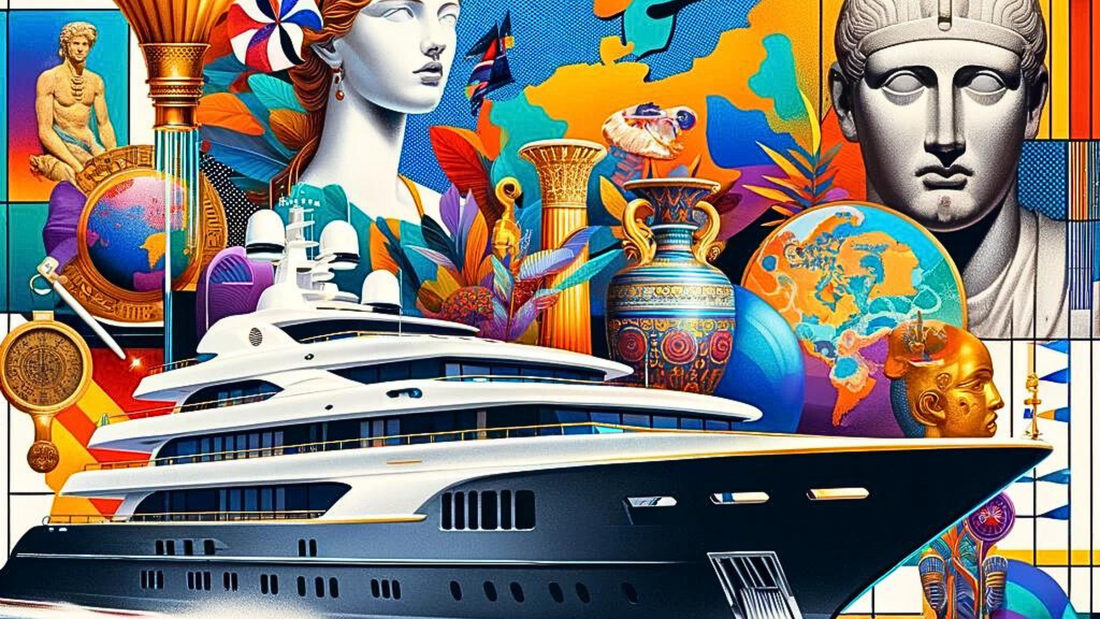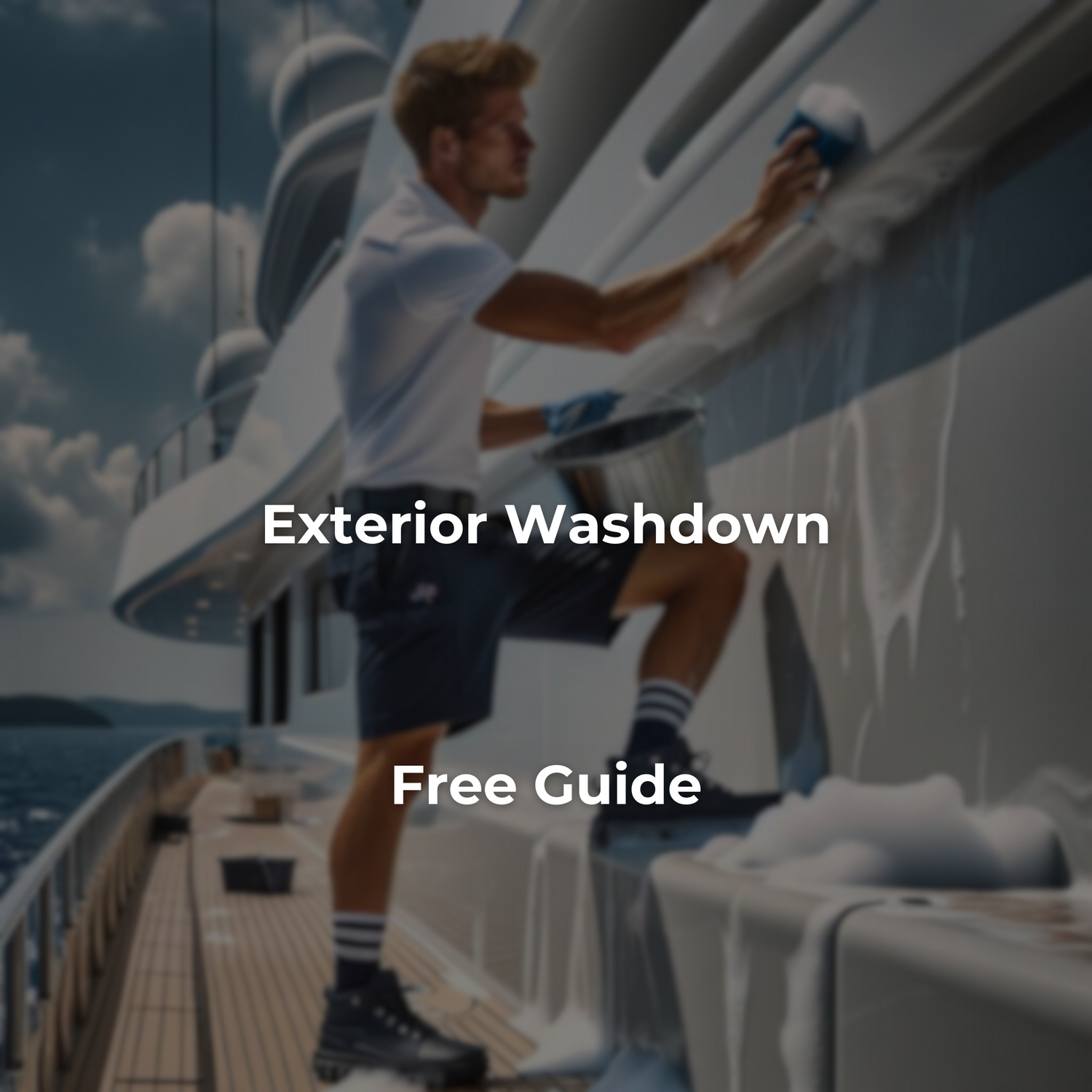Moving objects on superyachts across the sea is naturally hazardous because they are entering another territory far away and under the jurisdiction of a foreign national state.
Exporting and indeed the reverse, importing goods, requires greater care and attention when it comes to fine art. Art objects are unique and carry their own physical and legal attributes.
These include inherent vulnerability, issues of ownership and also legal obligations related to their unique characteristics.
Pandora Mather-Lees owns ArtOnSuperyachts.com. She is also a founding member of the Art Due Diligence Group and advises captains and crew in the care of art on board. Specifically she provides training on EU regulations aimed at combating looted antiquities. In this article Pandora explains one of three considerations with art exporting… A new law related to looted antiquities which will affect yachts entering European waters.

As the superyacht industry moves into 2025, a new regulatory challenge emerges on the horizon, bringing with it implications that demand the attention of crew members responsible for the safekeeping of onboard artifacts. EU Regulation EU2019/880 was crafted to combat the trafficking of conflict antiquities. Because of its impact on a wide variety of items entering EU territory, it now requires a deeper understanding and proactive approach to protect owners from seizures of objects.
Drawing upon her expertise in art care and compliance, Pandora offers a valuable tool for captains and crew, offering essential training on the practical implications export regulations.
The training provides background and an insight into why the new legislation was introduced and how it is going to be affecting yachts in international waters and why they are at risk from illegal artefacts and how these are trafficked around the world and often end up inadvertently on Superyachts.
Did you know that certain cultural goods over 200 years old will no longer be allowed entry into EU Countries without certification and also proof that they have been exported legally from their country of origin? These new laws aim to stem trafficking through conflict zones such as Syria or Iraq, looted to fund terrorist activities and to sell illegally excavated objects on the open and black markets. It affects more than excavated objects however but also fine art, ornaments, antiquities and design objects.
All crew, Captains, Pursers, Owner Representatives and Management Companies need to wake up to understand and protect themselves against the potential risks associated with carrying valuable art on Superyachts.
It seems customs offers, empowered to enforce the law will be taking an unusual amount of interest in some of the artefacts onboard and will be asking questions about ownership and documentation.
Crew may identify ornaments that look pretty old, but are not sure where they came from, what age they have or what value they are. All of a sudden you can find that a painting and an archaeological ornament are the subjects of intense questioning by customs officers and they will have no idea what to do and the owner is not available for questioning. They probably won’t have any paperwork to give to the customs officials, who are asking more questions than crew can answer.
They may demand export documentation, provenance of the artefacts, shipping documents and proof of ownership related to archaeological and other objects, before allowing the vessel to continue in French waters.

They are referring to EU Regulation 2019/880 but also there are additional regulations surrounding National Treasures and Endangered Species, the subject of additional training by Art On Superyachts.
At the heart of this regulation, however, lies a critical shift in the treatment of cultural goods depending on age and value. No longer can these treasures traverse borders without scrutiny. In fact, Islamic State authorises the looting of antiquities by its citizens for profit.
Therefore, regulations are in the works to limit the looting of artefacts in conflict zones, with an emphasis on counter-terrorist financing. The looting of antiquities in Syria and Iraq under the rule (or lack thereof) of the Islamic State, as one example has been public knowledge for years now. However, stricter regulations to prevent such destruction of cultural heritage is likely to impact owners and collectors of art. They, their dealers and staff will require additional documentation to move their objects and works of art in and outside the EU.
For superyachts navigating international waters, the regulatory landscape has grown increasingly intricate. Customs officials, armed with the provisions of EU Regulation EU2019/880, may now subject every artifact to intense scrutiny, demanding comprehensive documentation including export records, provenance, and ownership history. Such requirements can pose significant challenges for crew members who may be unfamiliar with the intricacies of art authentication and regulatory compliance.
As crew you may not be sure of your position or responsibility apropos the insurance of these items - are they covered? Is there an insurance policy tied to the SOPs? Well if an act is deemed illegal, insurance won’t cover this.
In summary Pandora says I often can’t help wondering why the owner chooses to have such valuables onboard. With the need to potentially having to prove ownership to any number of customs officials, and the risk of damaging them, you ask yourself if there is a better solution? Additionally, she advocates for alternative solutions, such as replica copies of artworks, to mitigate challenges associated with the regulation.
Now is the time to get one’s ship in order and to participate in training to understand the regulation a little better and what can be done to alleviate potential problems with customs officials who are empowered with criminal sanctions against perpetrators, innocent or not.
Pandora Mather-Lees' comprehensive training sessions offer invaluable guidance to superyacht crews navigating export risks. By equipping crew members with the knowledge and skills needed to comply with the regulation, Mather-Lees ensures that superyachts continue to sail safely and legally in international waters, preserving both their interior design beauty and integrity. Through education and preparedness, superyacht crews can navigate these regulatory waters with confidence and assurance.
Pandora Mather-Lees is an art specialist with over 20 years of experience in management and sales. Her expertise includes Art Handling Training, Art Management and due diligence. She is the Director of Pandora Art Services, and advises, educates and trains superyacht crew, butlers and household managers on the handling of the art for UHNWI’s. Her 10 module course, The Practical Care Of on-Board Art Collections, assists captains and crew with an understanding and appreciation of legal and handling risks of art in international waters, as a superyacht or Megayacht.




